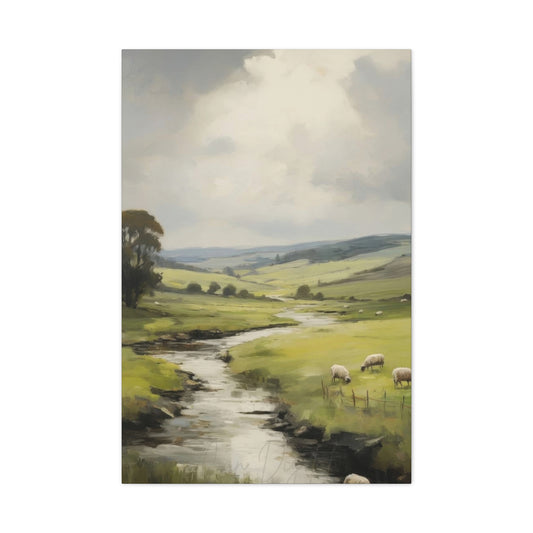When selecting a camera, the Canon EOS M may not be the first model that comes to mind. However, after using the camera for numerous photoshoots, including the images featured in this review, I can confidently say it still holds its ground. In this article, I’ll explain why the Canon EOS M remains a great option even in 2025 and why it’s still worth considering.
An Overview of the Canon EOS M: Features and Specifications
Released by Canon in 2012, the EOS M was designed as a lightweight, compact mirrorless camera equipped with features typically found in DSLR systems. Despite being over a decade old, the camera continues to impress with its image quality and versatility. Let’s dive into the key specifications:
-
Sensor Size: 14.9 x 22.3 mm APS-C
-
Image Resolution: 18 MP
-
ISO Range: 100 to 12,800
-
Shutter Speed: Maximum of 1/4000 seconds
-
Autofocus Points: 31
-
Video Capabilities: Full HD video recording
-
Weight: 298 grams (extremely light and portable)
Despite being small and compact, the Canon EOS M includes manual controls, interchangeable lenses, and full HD video capabilities. This makes it a strong contender for those looking for a compact camera that delivers professional-grade results.
Who Should Consider the Canon EOS M?
The Canon EOS M, despite being an older model, continues to be a solid choice for a wide range of photographers, particularly those looking for a lightweight and compact camera that doesn’t compromise on image quality. With its simple yet effective design, the EOS M is especially suitable for individuals who prioritize portability without sacrificing the capability to capture high-quality images. Its versatility in terms of lens options and ease of use makes it an appealing option for both beginners and hobbyists. Let’s dive deeper into why this camera might still be a great choice in 2025.
Ideal for Travelers and Street Photographers
One of the standout features of the Canon EOS M is its portability. At just 298 grams and with a compact build, it’s ideal for those who need a camera they can carry around all day without feeling weighed down. This makes the EOS M an excellent choice for travel photographers who are often on the move and need a camera that can easily fit into a small bag or even a larger pocket. Whether you’re shooting city streets, landscapes, or capturing moments in fast-paced environments, the Canon EOS M offers the flexibility and ease of use needed to shoot without being burdened by the size and weight of larger cameras.
Street photographers, in particular, will find the Canon EOS M a perfect companion for capturing candid moments. Its silent shutter, quick operation, and minimalistic design make it discrete, which can be crucial when photographing in public spaces without drawing attention. This allows photographers to capture raw, unposed moments without disturbing the scene, a trait that’s highly valued in street photography.
Versatile Lens Options for Various Photography Styles
The Canon EOS M comes with two primary lens options: the 18-55mm zoom lens and the 22mm prime lens. Both lenses are incredibly versatile and allow photographers to capture a wide range of subjects. The 18-55mm zoom lens is particularly useful for travelers and those who prefer the flexibility to shoot both wide-angle landscapes and closer, more detailed subjects without changing lenses. Its broad zoom range makes it adaptable to different environments, from sweeping cityscapes to detailed shots of architecture or people.
On the other hand, the 22mm prime lens is perfect for those who want a more focused, professional approach. Its wide aperture allows for beautiful background blur (bokeh) and superior low-light performance, making it an excellent choice for portrait photographers and those working in dimly lit settings. Despite the camera’s small size, the ability to switch lenses means it can handle a wide range of photographic styles and settings, making it highly adaptable for both amateur and budding professional photographers.
Perfect for Everyday Use and Family Photography
Beyond the specific genres like travel and street photography, the Canon EOS M excels at everyday use. For families, casual photographers, or anyone just getting started with photography, the EOS M provides an accessible entry point to better-quality images compared to what a smartphone or compact point-and-shoot camera could achieve. Whether capturing holiday moments, family events, or everyday scenes, the EOS M delivers crisp, vibrant photos that stand out in terms of both detail and color accuracy.
The ease of use and user-friendly interface make the Canon EOS M an ideal option for people who might not be familiar with complex camera systems. Its touchscreen display allows you to navigate settings and focus with ease, and the camera’s quick autofocus, while not as fast as more modern systems, is sufficient for many general-purpose shooting scenarios. It’s the kind of camera that encourages photographers to step up their game without being overwhelming.
The Autofocus Limitations: A Drawback for Fast-Moving Subjects
While the Canon EOS M is versatile and functional, one of its drawbacks is its autofocus system. While it uses Canon’s Hybrid CMOS AF System, which combines phase detection and contrast detection, the autofocus performance is not as fast or as responsive as that of newer models or those found in high-end DSLRs and mirrorless cameras. This slower autofocus is particularly noticeable when photographing fast-moving subjects, such as in sports or wildlife photography. The system may struggle to keep up with rapid motion or focus quickly in low-light environments, which could be frustrating for those looking to capture high-speed action.
If you’re primarily interested in capturing fast-moving subjects or if you specialize in sports or wildlife photography, the EOS M might not be the best fit. In such cases, newer mirrorless cameras with more advanced autofocus systems, like the Canon EOS M50 Mark II or even the Canon EOS R series, would provide faster and more accurate focusing for these types of scenes.
Editing and Customization for Creative Expression
One of the strengths of the Canon EOS M is its flexibility in the post-processing stage. While the autofocus system may be slow in some situations, the image quality delivered by the 18 MP APS-C sensor is exceptional for a camera of its size. This means that even if you miss focus or need to make adjustments in editing, you still have a high-quality base to work with. Whether you shoot in JPEG or RAW, the Canon EOS M retains impressive detail and dynamic range, especially when shooting in natural light.
Furthermore, the camera offers various in-camera editing options, including creative filters and effects that can be applied to your photos before saving them. These creative tools allow you to experiment with your photos directly within the camera, giving you some flexibility without needing to turn to external software for basic edits.
Limitations and Considerations for Newer Users
While the Canon EOS M is a great choice for many photographers, it’s important to note that it might not be the right fit for every type of photography. Its autofocus system may not suit photographers who need to quickly capture fleeting moments or those who work with fast-moving subjects. Additionally, while the lens selection is decent, it may not offer the breadth or versatility that other camera systems, like those from Sony or Fujifilm, provide. The EF-M lens ecosystem is somewhat limited, and if you’re looking for specific lenses like telephoto zoom or fast primes, you might need to rely on third-party manufacturers or the use of lens adapters.
The lack of an electronic viewfinder (EVF) or optical viewfinder can also be a deal-breaker for some users. Those who prefer composing their images through a viewfinder rather than relying solely on the rear LCD screen might find this aspect inconvenient, particularly in bright outdoor environments.
Who Should Still Consider the Canon EOS M?
Despite these limitations, the Canon EOS M remains a fantastic camera for photographers who prioritize portability, simplicity, and solid image quality. If you’re a traveler, street photographer, or someone who enjoys capturing everyday moments, the EOS M offers a great balance of performance and ease of use. Its small size makes it an ideal option for people who want to upgrade from smartphone photography without the bulk of a larger camera system.
For photographers who already own Canon lenses or prefer using lenses from Canon’s DSLR systems, the ability to use EF and EF-S lenses via an adapter is an invaluable feature. This gives you access to a wide range of lenses, allowing you to tailor the camera to your specific needs. However, those focused on high-speed performance or fast-moving subjects might want to look at newer models, as the EOS M’s autofocus system does show its age.
Key Features and Performance
Lens Compatibility with the Canon EOS M: Flexibility and Versatility
The Canon EOS M, a mirrorless camera that has maintained its appeal over the years, offers a unique combination of portability, ease of use, and impressive image quality. One of the standout features that sets this camera apart is its lens compatibility. While the Canon EOS M uses the EF-M lens mount, it is not restricted solely to lenses in this series. With the help of an adapter, the camera is able to accept Canon’s larger range of EF and EF-S lenses, which significantly broadens the camera’s potential. Let’s take a deeper dive into how lens compatibility impacts the overall performance and user experience of the Canon EOS M.
Understanding the EF-M Lens Mount and Its Advantages
The Canon EOS M was designed with the EF-M lens mount to cater specifically to the M series of mirrorless cameras. The EF-M mount is compact, designed to suit the camera’s small size while ensuring that the lenses are lightweight yet capable of delivering high-quality images. Canon has developed a wide selection of EF-M lenses that cover a range of focal lengths, from ultra-wide-angle to telephoto, making it easy for photographers to find the right lens for their needs. These lenses are known for their sharpness, color accuracy, and overall performance, which is what you would expect from Canon.
However, the real beauty of the Canon EOS M comes from its adaptability. The EF-M lens mount doesn’t restrict you to just Canon's M-series lenses. Instead, with an adapter, the camera can use Canon’s EF and EF-S lenses, which are part of the DSLR lineup. This is a significant advantage because many photographers already own a collection of EF and EF-S lenses, particularly those who have used Canon’s DSLRs in the past. Being able to reuse these lenses with the EOS M provides both convenience and cost savings.
Adapting Older Lenses to the Canon EOS M
One of the biggest advantages of the Canon EOS M’s compatibility with EF and EF-S lenses via an adapter is the ability to continue using lenses that you may already own. If you have Canon lenses from a previous DSLR or simply prefer the feel and performance of certain glass, the adapter allows you to use these lenses with the EOS M body without any loss of image quality. This makes the EOS M a more affordable choice for users who already have investments in Canon’s DSLR lens ecosystem.
Canon has made it easy for users to attach their existing EF and EF-S lenses to the Canon EOS M by offering adapters such as the Canon EF-EOS M lens mount adapter. This simple accessory works with virtually any EF or EF-S lens, maintaining autofocus functionality and giving you full control over aperture settings. Many third-party manufacturers also offer lens adapters, which further expands your options for using older lenses.
The versatility of being able to use Canon’s extensive range of lenses—from wide-angle primes to telephoto zoom lenses—makes the Canon EOS M an appealing choice for a variety of shooting styles. Whether you're a portrait photographer, landscape enthusiast, or macro photography specialist, the ability to attach different lenses allows you to experiment with various focal lengths, depth of field, and creative perspectives.
Considerations When Using Non-EF-M Lenses with the Canon EOS M
While the compatibility with EF and EF-S lenses is undoubtedly an advantage, there are some important considerations to keep in mind. First and foremost, the autofocus system on the Canon EOS M, though capable, may struggle to maintain the speed and accuracy when using non-EF-M lenses. The camera’s autofocus system, known as the Hybrid CMOS AF system, works well with EF-M lenses, but when you switch to an EF or EF-S lens, especially when using an adapter, the autofocus performance tends to slow down.
This is particularly noticeable in fast-paced shooting scenarios, such as sports or wildlife photography, where quick and accurate focus is critical. The slower autofocus may make it difficult to capture fast-moving subjects with the same precision and efficiency you would get from more modern mirrorless or DSLR cameras. This issue is not a dealbreaker for all photographers, but it is something to be aware of, especially if you plan on using the EOS M for action shots.
Moreover, the use of larger lenses through an adapter may affect the camera's overall handling and balance. Although the Canon EOS M is lightweight and compact, attaching larger EF or EF-S lenses may make the setup front-heavy. To counter this, photographers often use a tripod or a stabilizing system to ensure steady shots, particularly when using heavier lenses.
Another consideration is that some EF and EF-S lenses are not as optimized for mirrorless systems as they are for DSLRs. This could result in minor issues such as slower focusing or the inability to utilize certain advanced features, such as continuous autofocus in video mode. While this is more of a limitation for advanced video shooters, it’s something to keep in mind for those who want to shoot video with a variety of lenses.
How Lens Choice Can Affect Image Quality
While the autofocus and performance may take a hit when using EF or EF-S lenses with an adapter, the overall image quality remains largely unaffected. The 18 MP APS-C sensor of the Canon EOS M is a strong performer, capable of producing sharp, vibrant images with excellent detail. Whether you're using EF-M lenses or EF and EF-S lenses, the image quality should remain consistently high. The real difference lies in the focal length and depth of field control that certain lenses offer.
For example, EF-S lenses tend to have larger apertures and more advanced optical designs, which makes them particularly useful for portrait photography where subject isolation and bokeh (background blur) are key. The ability to use a 50mm f/1.8 lens or a 24-70mm f/2.8 zoom lens on the EOS M opens up creative possibilities that wouldn’t otherwise be achievable with the EF-M lens lineup.
Additionally, Canon’s EF lenses are renowned for their optical quality, and when used with the Canon EOS M, they can still deliver exceptional results. Lenses like the Canon EF 70-200mm f/2.8 or the Canon EF 85mm f/1.4L, when used on the EOS M, will give you the same sharpness, contrast, and color accuracy they offer on a DSLR body.
The EF-M Lens Range and Its Role in the EOS M System
While the ability to use EF and EF-S lenses through an adapter is a significant benefit, the Canon EOS M system also has its own dedicated EF-M lens lineup. These lenses are specifically designed for the mirrorless camera and offer a compact form factor that complements the small size of the EOS M body. The EF-M lenses are known for their high quality and compactness, making them ideal for photographers who value portability and ease of use.
Canon offers a variety of EF-M lenses, including prime lenses like the 22mm f/2 STM lens and zoom lenses like the 18-55mm f/3.5-5.6 IS STM. These lenses are lightweight and highly portable, perfect for photographers who want to carry a camera system that is easy to handle and discreet in public. The EF-M lenses may not offer the same depth of field control or focal length range as their EF counterparts, but they still produce excellent results for everyday photography.
Image Quality: An Overview of the Canon EOS M's Performance
The Canon EOS M may not be the latest model in Canon's lineup, but it certainly punches above its weight when it comes to image quality. The 18 MP APS-C sensor inside this mirrorless camera is a crucial component that ensures sharp, detailed, and vibrant images. The same sensor, essentially, is found in the Canon 7D—a camera that made waves in the industry for its impressive image quality when it was first released. This sensor allows the EOS M to capture stunning photos with remarkable clarity, and when paired with the right lenses, it’s capable of producing images that hold up against more modern mirrorless and DSLR cameras.
For those seeking crisp color reproduction and natural skin tones, the Canon EOS M delivers. The sensor’s color accuracy is one of the standout features, and images captured with this camera tend to look natural, with great contrast and well-balanced tones. The lack of an anti-aliasing (AA) filter in the Canon EOS M is a deliberate choice by Canon, and it’s one that helps ensure images are sharper, with fine details being preserved. While some photographers may notice slight softness in certain conditions with other cameras, the EOS M’s sensor design minimizes this issue, especially when paired with high-quality lenses.
Low-Light Performance: Handling Challenging Lighting Conditions
Low-light photography can often be a challenge, but the Canon EOS M holds its ground in such scenarios. With a native ISO range that extends up to 12,800, the EOS M manages to capture usable images even in relatively dim environments. While this ISO range may not compete with the ultra-high ISO capabilities of modern cameras, it still produces acceptable results for most low-light situations. It's capable of shooting in moderate low light, like dimly lit interiors or evening shots, without the overwhelming noise that often plagues cheaper or older models.
It’s important to note, however, that the EOS M isn't designed for extreme low-light photography or professional-level work in very dark conditions. In such instances, newer cameras with better noise reduction algorithms and higher ISO limits will undoubtedly perform better. Still, for hobbyists, casual photographers, or those capturing everyday moments in normal low-light environments, the Canon EOS M performs admirably.
When shooting in challenging light conditions, the use of stabilized lenses or a tripod can help counteract the absence of in-body stabilization. This becomes especially useful when shooting slower shutter speeds or when trying to achieve sharp shots in darker environments.
Autofocus System: Tracking the Perfect Moment
The autofocus system of the Canon EOS M, featuring the Hybrid CMOS AF, is certainly functional but shows its age compared to newer models. The system incorporates phase-detection pixels for quicker focusing, which helps it deliver fairly quick autofocus in bright lighting conditions. The face detection feature is another helpful tool for portrait photographers, as it locks focus on a subject’s face with reasonable accuracy, though it may not be as fast or responsive as the more sophisticated systems in newer mirrorless cameras.
In fast-paced environments, such as sports or wildlife photography, the EOS M’s autofocus system can be slower than what modern cameras offer. It is generally sufficient for stationary subjects or when you’re working with subjects that aren't moving at high speed. The autofocus can become sluggish in low-light conditions, where even higher-end cameras tend to struggle. The inclusion of an autofocus assist beam is a helpful feature in these conditions, shining a red LED light to help the camera focus in the dark, but it’s not as seamless as the focusing systems found in newer models.
While the autofocus speed and accuracy of the EOS M might disappoint some users, it’s still perfectly capable of capturing sharp images in most situations, especially when you take the time to work within its limitations.
Video Capabilities: Full HD for Casual Videography
The Canon EOS M is also capable of shooting full HD video at 30 frames per second (fps), delivering footage with great color accuracy and clarity. While modern cameras now offer 4K video, the EOS M remains an excellent option for casual videographers, content creators, or hobbyists who are focused on recording video in high definition. The inclusion of a microphone input adds versatility, allowing you to plug in an external microphone for better sound quality—an essential feature for those aiming for a more cinematic experience.
However, there are a few limitations to keep in mind. The EOS M can only record video for 29 minutes and 59 seconds at a time, which may be inconvenient for long video shoots. While most casual videography won’t exceed this time frame, those creating longer-form content might find this a hindrance. Despite this, the camera's video capabilities are more than enough for personal projects, family events, and short YouTube videos. The ability to shoot Full HD with solid color rendition makes this an excellent option for those just starting in video production or those who want a camera for occasional video use.
Design and Handling: Compact and Easy to Use
One of the most significant advantages of the Canon EOS M is its compact form factor. Weighing in at just 298 grams and with dimensions of 109 x 67 x 32mm, it’s a lightweight, portable camera that can be taken on the go without any hassle. Whether you’re heading out for a day trip or traveling the world, the EOS M fits easily into a bag, making it an ideal choice for people who want a capable camera without the bulk of a DSLR.
Despite its small size, the EOS M maintains a solid build quality that feels substantial in the hand. The intuitive touchscreen interface is responsive, making it easy to adjust settings on the fly. While the absence of a viewfinder may seem like a disadvantage to some, the camera's live view mode and LCD screen provide an adequate solution. The screen, while not as sharp or vibrant as newer models, still provides clear visibility and is easy to use in most lighting conditions.
While some may prefer the optical or electronic viewfinders found on other mirrorless or DSLR cameras, the Canon EOS M's reliance on the LCD screen doesn't detract significantly from its usability, especially for those accustomed to composing shots using a screen rather than a viewfinder.
Handling Limitations and How to Mitigate Them
While the EOS M performs well in most standard scenarios, its autofocus system is one of the primary limitations that need to be addressed. As mentioned earlier, the autofocus tends to slow down in low-light conditions and with fast-moving subjects. For users who are regularly photographing sports, wildlife, or fast-paced action, the EOS M’s slower autofocus system could be frustrating.
One way to address this limitation is by pairing the Canon EOS M with EF-M lenses, as these are specifically designed to work more efficiently with the camera’s autofocus system. Although adapters can allow the use of EF and EF-S lenses, using non-native lenses could lead to slower focusing, which is something to keep in mind for certain shooting situations. Additionally, using manual focus lenses can give photographers more control, especially in situations where autofocus may not work as effectively, but it requires a bit more effort and precision.
Canon EOS M Alternatives
If you’re considering other options, the Canon EOS M series has evolved over the years, with newer models offering enhanced autofocus, 4K video capabilities, and more advanced features. For those who are looking for a more feature-rich mirrorless camera, you might want to consider the Canon EOS M50 or M6 Mark II.
In addition to Canon’s own newer models, competitors like Sony’s NEX series or Fujifilm’s X series offer solid alternatives with faster autofocus and better video capabilities. While these models may be more expensive, they come with updated features that may appeal to those looking for the latest technology.
Should You Buy the Canon EOS M in 2025?
The Canon EOS M, though released more than a decade ago, remains a popular choice for many photographers in 2025. With its compact size, reliable image quality, and versatile features, it continues to stand out as a solid option for photographers who don’t need the latest high-end camera technology but still want a portable and capable tool for a variety of photography styles. Whether you’re a budding photographer looking to upgrade from smartphone images or a seasoned enthusiast seeking a lightweight, travel-friendly option, the Canon EOS M provides an excellent balance of performance and portability.
Compact and Lightweight Design: Perfect for On-the-Go Photography
One of the standout features of the Canon EOS M is its compact and lightweight build, weighing only 298 grams and measuring just 109 x 67 x 32mm. This makes it the ideal choice for anyone who needs a portable camera that doesn’t take up much space. Whether you’re traveling, hiking, or simply going out for a day of street photography, the EOS M is easy to slip into a bag or carry in your hand without feeling weighed down by bulk. For photographers who are constantly on the move or who prioritize mobility, this small form factor is a significant advantage.
Despite its compact size, the camera doesn’t compromise on build quality. The Canon EOS M feels sturdy in the hand and features intuitive controls, including a touchscreen interface that allows you to adjust settings easily on the fly. This makes it particularly useful for photographers who want quick adjustments without diving into complex menus, offering a more seamless shooting experience.
Versatile Lens Compatibility: Maximizing Your Photography Experience
Another key benefit of the Canon EOS M is its lens compatibility. While the camera uses the EF-M lens mount, which is specific to Canon’s M series of mirrorless cameras, it also offers the flexibility to use Canon’s EF and EF-S lenses with an adapter. This is a major advantage for photographers who already own Canon DSLR lenses or who want to explore a wider variety of lens options.
The ability to use older lenses from Canon’s DSLR lineup, such as the EF-S lenses, makes the EOS M an excellent choice for those who want to maximize their investment in lenses without having to purchase new ones. By utilizing lens adapters, you can tap into a broad range of affordable used lenses, opening up a world of creative possibilities without breaking the bank. However, it is important to note that autofocus speed may be slightly slower when using EF or EF-S lenses with an adapter, particularly during fast-paced action or low-light conditions. For general portrait, landscape, and casual photography, however, this slowdown is usually not a significant issue.
Image Quality: Still Impressively Sharp and Detailed
The Canon EOS M’s 18 MP APS-C sensor still holds up well even in 2025, delivering sharp and vibrant images with excellent color reproduction. This sensor is comparable to the one found in the Canon 7D, a camera that was highly praised for its image quality when it was first released. Despite the advancements in camera technology over the past decade, the EOS M’s sensor still produces clean and crisp images, with natural-looking colors and good contrast.
The maximum ISO of 12,800 is a notable feature for those who often shoot in low-light environments. While this ISO range may not be as high as what you’ll find in more recent models, it still allows the Canon EOS M to perform well in dimmer conditions. For everyday shooting, casual portraiture, and travel photography, the EOS M delivers reliable performance. The lack of an anti-aliasing (AA) filter contributes to sharper and more detailed images, with minimal softness, making the camera a strong performer for both general use and detailed close-up shots.
Autofocus: Adequate for Static Subjects, But Not for Fast Action
The autofocus system of the Canon EOS M, featuring Canon's Hybrid CMOS AF with phase-detection pixels, is functional, but it lags behind modern mirrorless and DSLR cameras in terms of speed and accuracy. While the system works well for stationary subjects or general portrait photography, it may struggle with fast-moving objects or in low-light conditions. If you're looking for a camera to capture high-speed action like sports or wildlife photography, the EOS M might not be the best choice due to its slower autofocus and lack of tracking accuracy in challenging scenarios.
That said, the camera's face detection works decently for portraits, locking onto the subject's face and keeping it in focus. The autofocus assist beam helps in low-light situations, but it’s not as efficient as the more sophisticated systems found in newer cameras. If you are primarily focused on capturing static subjects or scenes where speed isn't a concern, the EOS M’s autofocus system will still deliver satisfactory results. However, if you need a faster and more responsive system, you might want to look into newer models with advanced autofocus technologies.
Video Capabilities: Full HD for Casual Videography
For videographers, the Canon EOS M offers full HD 1080p video recording at 30 fps. While modern cameras now boast 4K video and advanced video features, the EOS M still holds up well for casual video shoots. The quality of the video footage is solid, with good color accuracy and clarity. The camera also includes a microphone input, which is valuable for those who want to improve the audio quality of their recordings by using an external microphone.
That said, the EOS M has a recording limit of 29 minutes and 59 seconds, which might be a drawback for long-form content creators. However, for those shooting shorter videos, travel logs, or family memories, the camera is more than capable of delivering high-quality footage. The 1080p resolution is more than sufficient for most casual or personal videography projects, and the inclusion of manual sound controls allows for a more professional touch.
Portability and Ease of Use: Ideal for Everyday Photographers
One of the most compelling reasons to buy the Canon EOS M in 2025 is its portability. Weighing only 298 grams, this camera is ideal for photographers who value a lightweight, compact design without sacrificing performance. Whether you're traveling, exploring a new city, or simply out for a day of shooting, the EOS M is easy to carry around and fits comfortably in your bag.
The touchscreen interface enhances the user experience by making it easy to adjust settings and navigate menus. Although the EOS M doesn’t include a viewfinder, many photographers accustomed to using the LCD screen or an electronic viewfinder will find that it provides an adequate way to compose their shots. The screen is responsive and offers good visibility in most lighting conditions, although it may not be as sharp or vibrant as newer models.
The Bottom Line: Is the Canon EOS M Still Worth Buying?
In conclusion, the Canon EOS M remains a fantastic option in 2025 for those who prioritize portability, ease of use, and high-quality imaging without breaking the bank. Its compact size, reliable image quality, and versatile lens compatibility make it an excellent choice for everyday use, travel, street photography, and casual videography. While its autofocus system may not be as fast as newer mirrorless cameras, it still performs well for stationary subjects, portraits, and casual photography.
If you already own Canon lenses or are looking to take advantage of affordable, used lenses, the EOS M’s ability to accept EF and EF-S lenses via an adapter is a major plus. For those seeking a reliable, lightweight camera for general photography or as an upgrade from smartphone photography, the Canon EOS M continues to provide excellent value in 2025.
Ultimately, if you don’t require the latest features or ultra-fast autofocus, the Canon EOS M remains a worthy investment for photographers who value portability and performance. It’s a great option for those looking to step up their photography without the weight and complexity of larger, more expensive cameras.




























